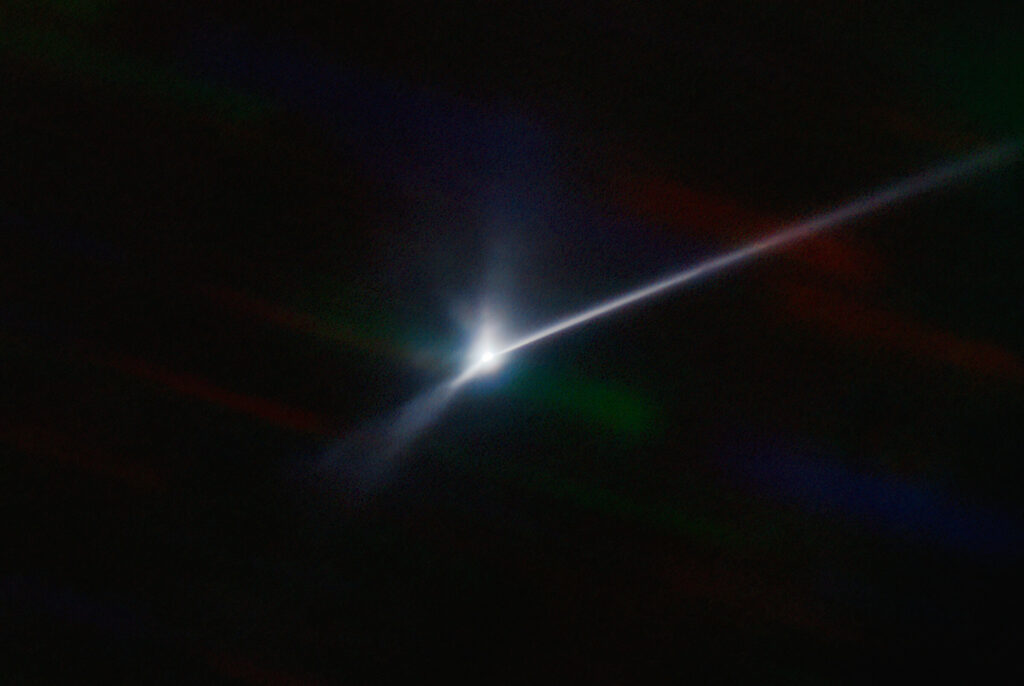The SOAR telescope photographed the tail of the Dimorphos asteroid with a length of more than 10 thousand km. It was formed as a result of an impact on the small body of the DART probe.

On September 26, the NASA-owned DART probe rammed the asteroid Dimorphos, which is a moon of the larger asteroid Didymos. This was done as part of an experiment, the purpose of which was to study the possibility of changing the orbit of a celestial body threatening the Earth by kinetic action. The collision was observed by both ground-based telescopes and the Italian cubesat LICIACube, which separated from DART.
The visual side of the collision exceeded the expectations of most astronomers. The impact knocked out a large amount of material, which caused the Dimorphos’s brightness to increase three times. Moreover, the asteroid has acquired a very real tail, resembling a comet. Two days after the collision, the 4.1-meter SOAR telescope installed in Chile photographed a plume of dust and debris trailing behind the Dimorphos. Its length exceeds 10 thousand km, it was formed as a result of the pressure of sunlight on the material knocked out by the impact.
According to astronomers, observations of the Dimorphos and its tail will help them better understand the properties of the asteroid’s surface, the amount of matter knocked out by the impact, as well as the size distribution of its particles. In the future, this data may be useful when planning missions, the purpose of which will be the task of protecting our planet from dangerous visitors from outer space.
Earlier we talked about the prestigious award that the photo of Leonard’s comet received.
According to https://noirlab.edu
Follow us on Twitter to get the most interesting space news in time
https://twitter.com/ust_magazine

